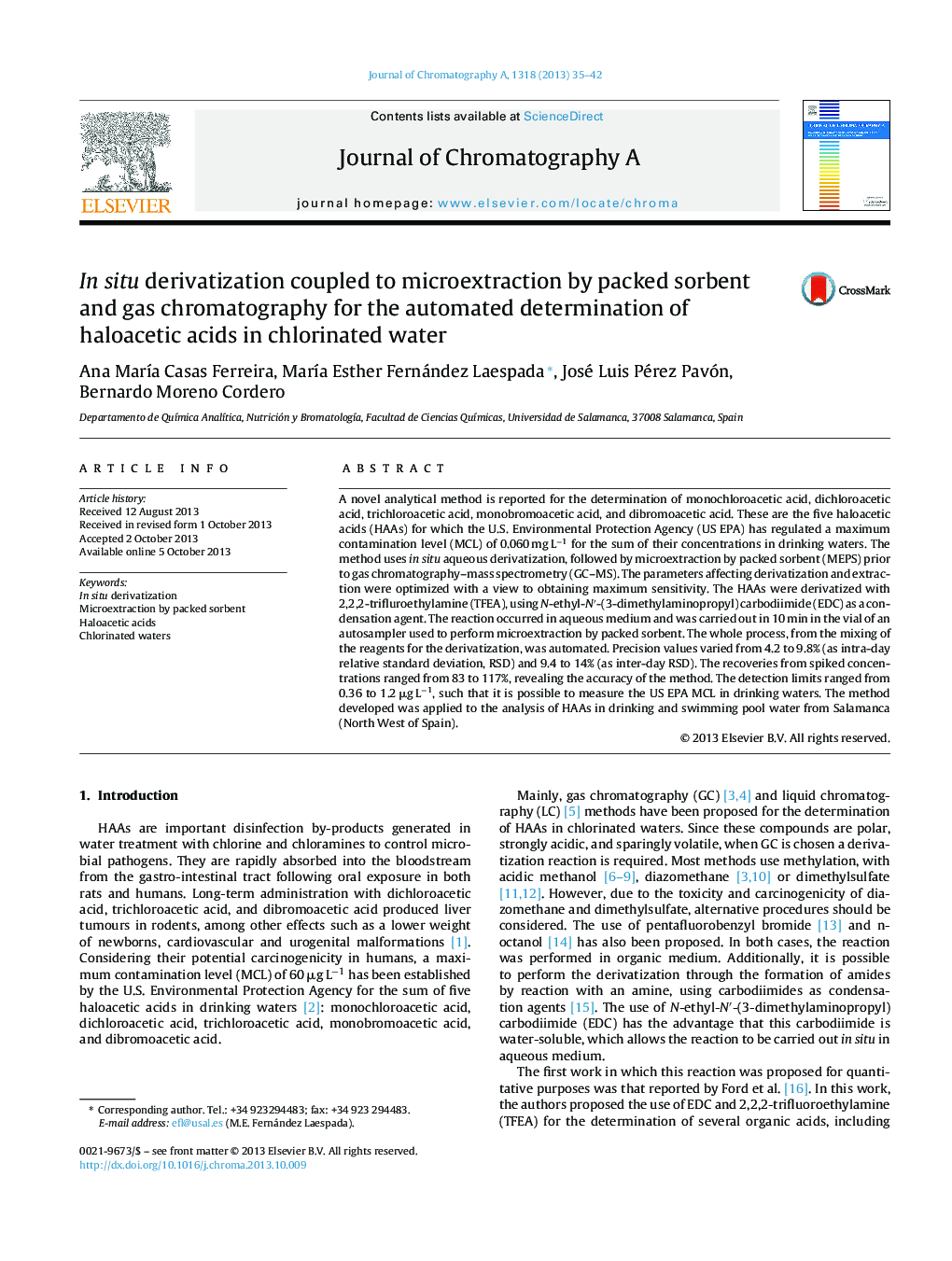| کد مقاله | کد نشریه | سال انتشار | مقاله انگلیسی | نسخه تمام متن |
|---|---|---|---|---|
| 1200838 | 1493608 | 2013 | 8 صفحه PDF | دانلود رایگان |

• Novel method determination of five regulated haloacetic acids in chlorinated waters.
• In situ derivatization, microextraction by packed sorbent, GC and MS.
• Automated process from the mixing of the reagents for the derivatization.
• Method applied to the analysis of haloacetic acids in tap and swimming pool waters.
A novel analytical method is reported for the determination of monochloroacetic acid, dichloroacetic acid, trichloroacetic acid, monobromoacetic acid, and dibromoacetic acid. These are the five haloacetic acids (HAAs) for which the U.S. Environmental Protection Agency (US EPA) has regulated a maximum contamination level (MCL) of 0.060 mg L−1 for the sum of their concentrations in drinking waters. The method uses in situ aqueous derivatization, followed by microextraction by packed sorbent (MEPS) prior to gas chromatography–mass spectrometry (GC–MS). The parameters affecting derivatization and extraction were optimized with a view to obtaining maximum sensitivity. The HAAs were derivatized with 2,2,2-trifluroethylamine (TFEA), using N-ethyl-N′-(3-dimethylaminopropyl) carbodiimide (EDC) as a condensation agent. The reaction occurred in aqueous medium and was carried out in 10 min in the vial of an autosampler used to perform microextraction by packed sorbent. The whole process, from the mixing of the reagents for the derivatization, was automated. Precision values varied from 4.2 to 9.8% (as intra-day relative standard deviation, RSD) and 9.4 to 14% (as inter-day RSD). The recoveries from spiked concentrations ranged from 83 to 117%, revealing the accuracy of the method. The detection limits ranged from 0.36 to 1.2 μg L−1, such that it is possible to measure the US EPA MCL in drinking waters. The method developed was applied to the analysis of HAAs in drinking and swimming pool water from Salamanca (North West of Spain).
Journal: Journal of Chromatography A - Volume 1318, 29 November 2013, Pages 35–42